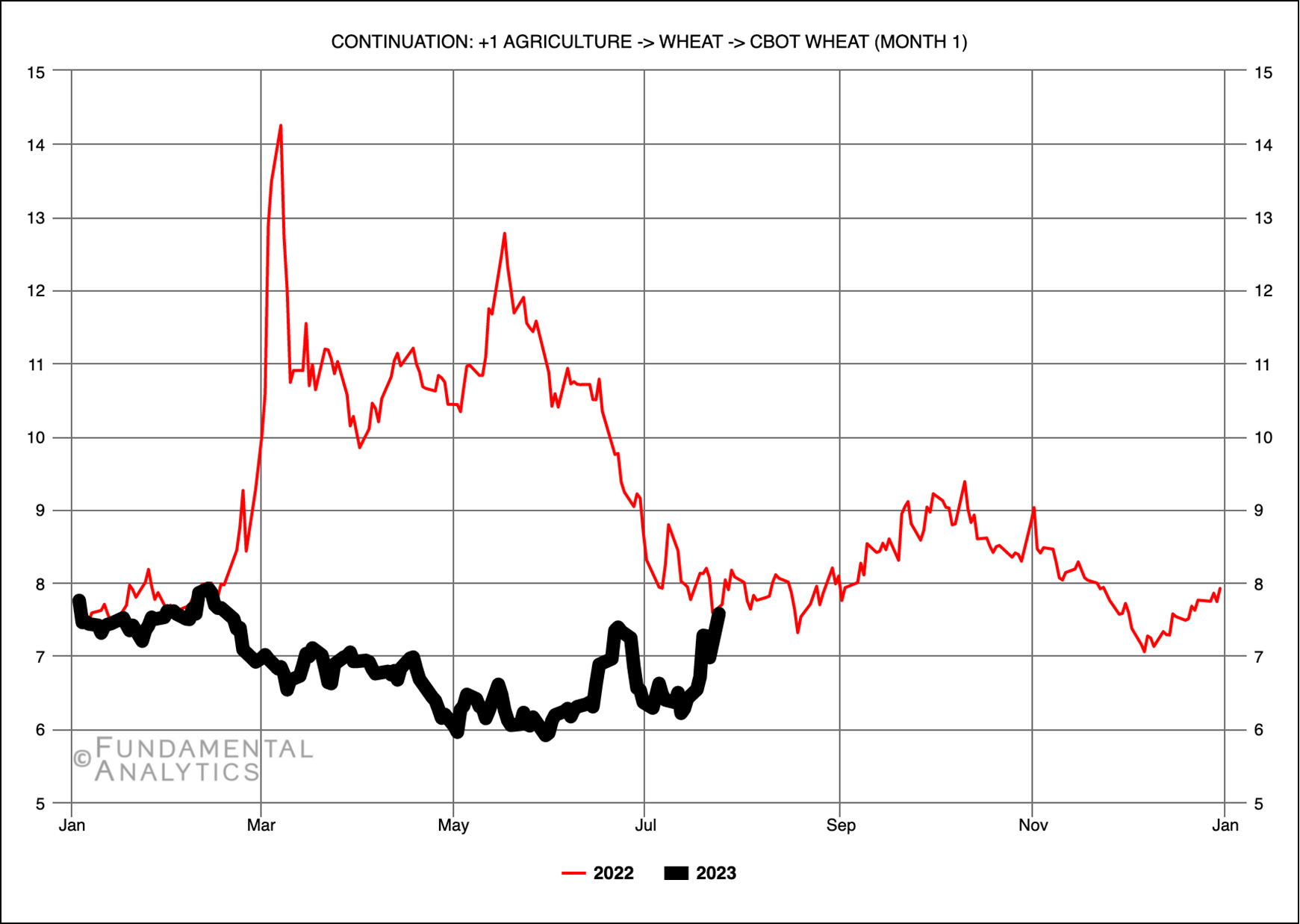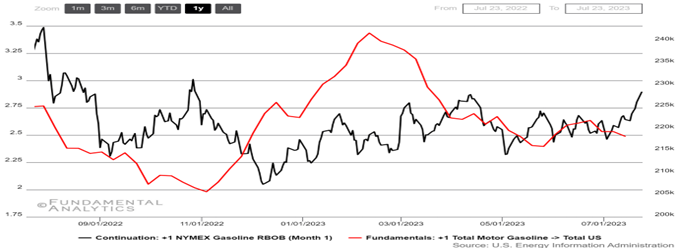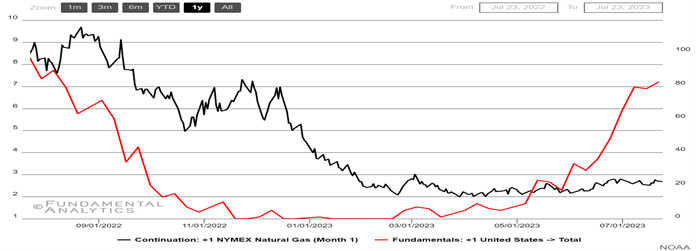July 25, 2023
Key insights about how lower global oil and natural gas demand affected the prices of the main energy commodities.
Crude Oil
Rig Counts Decreasing – WTI Showed Strong Short Term Returns

- From the start of May 2023, the rotary rig count has significantly dropped and reached its lowest level in a year, according to the latest Baker Hughes report (data as of July 21st). Lower rotary rig count leads to lower production which pushes up prices if demand remains stable or increases.
- On the other hand, WTI crude oil has been relatively stable at $67-77 for the same span, and only the last 10 trading sessions has presented bullish movement amid better-than-expected inflation earnings numbers.
- The market expects no further interest rate hikes after the July meeting, which has alleviated recessionary fears. With recessionary fears gone, the economy is expected to grow, hence the need for more oil. Consequently, oil prices may head north in the near term.
Gasoline
Gasoline Prices Boosted Lower Than Anticipated

- U.S. gasoline stocks have dropped -9.7% since mid-February, where they had reached their highest level in a year, indicating strong demand and leading RBOB gasoline prices to soar more than +15.6% for the same span.
- National daily average regular gasoline retail prices have not significantly changed m/m, despite the increased seasonal demand. According to AAA Gas Prices, the national average retail gasoline price was $3.605 per gallon on June 25 and has increased only 0.8 cents to $3.613 on July 25. Typically, gasoline prices rise during the summer months because summer blend gasoline is more expensive to produce and demand for gasoline is higher due to increased travel.
- Lower global oil demand, higher interest rates, and Saudi production cuts have offset one another, keeping oil prices stable.
- China’s economic activity forms a considerable factor that could affect gasoline prices in the coming months. If China’s economic growth increases significantly during the second half of 2023, then the demand for oil products could move upwards, thereby pushing the prices of oil and gasoline higher.
Natural Gas
Natural Gas Prices May Be Supported By Higher Consumption

- US natural gas futures traded around $2.65/MBtu mid-week (black line), driven by expectations of increased demand for air conditioning.
- As displayed on the chart above, the CDD (cooling degree days) reached YTD high of 82 days on the 22nd of July, prompting investors to anticipate higher consumption (red line).
- On the other hand, average gas output has risen to 101.6 bcf/d in July, up from 101.0 bcf/d in June. This indicates that not only investors expect higher demand but that producers also slightly increased the amount of gas output.